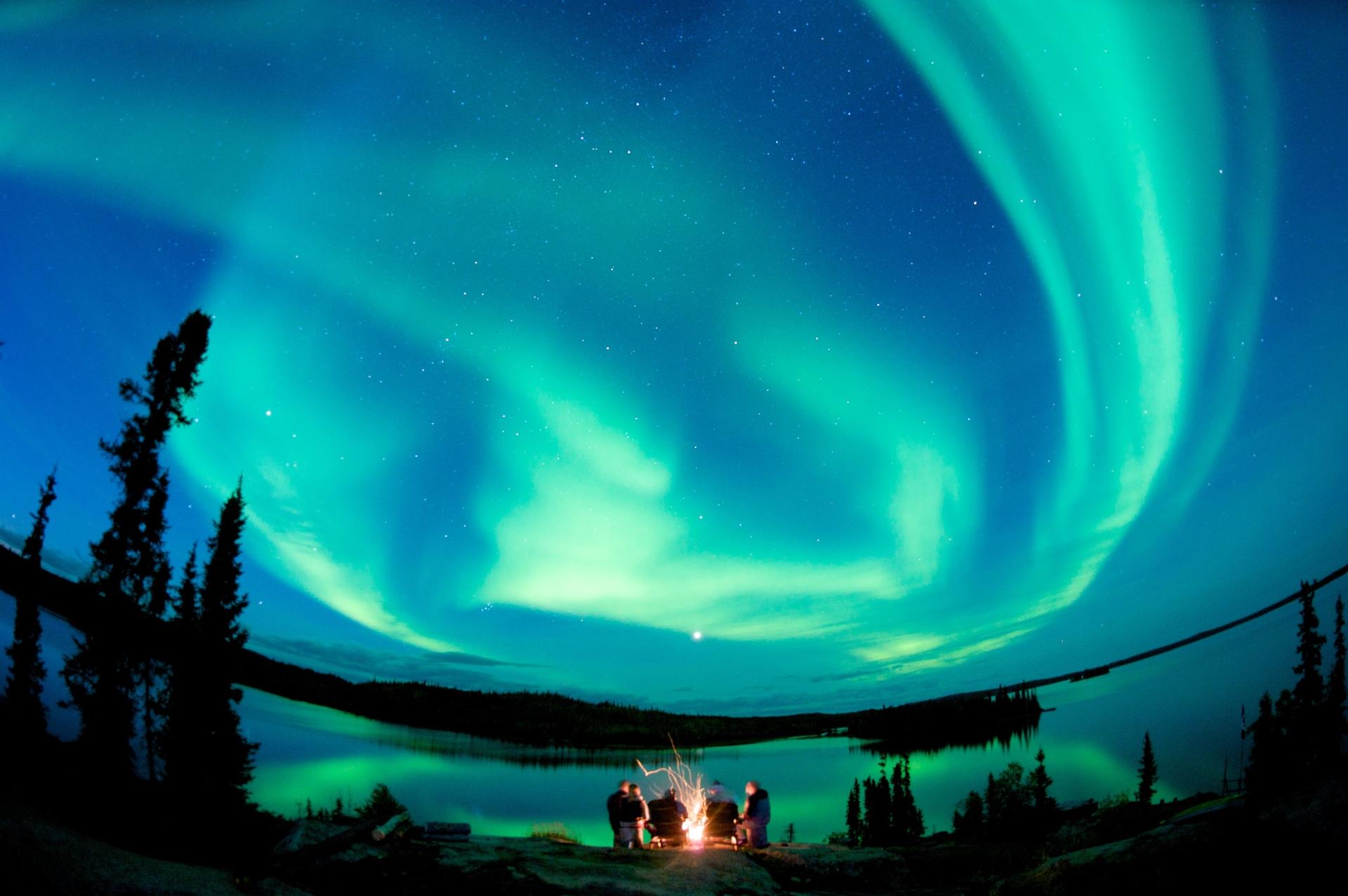Pourquoi les aurores boréales sont aussi incroyables l’été

This post was originally published on the Spectacular Northwest Territories website.
A dogsled, a snowy trail, and the aurora. That's how millions of prospective visitors imagine the Northwest Territories - a winter wonderland, bathed by glowing lights. But increasingly, aurora-watchers are flocking here long before Old Man Winter arrives - and discovering why seeing the Northern Lights in summer is a hot trend indeed.
Over the past few years, summertime aurora tourism has skyrocketed in Yellowknife. Last year alone, the number of Lights-seekers doubled during the August-to-October period. And while it's true that skygazers at that time of year must stay up a bit later to enjoy the cosmic lightshow, they're in for a treat. According to many, seeing the Northern Lights is best in summer - and they say a number of myths about "when to watch the Aurora" are full of hot air:
Myth 1: The aurora goes dormant in summer
False. The Northern Lights don’t fire up in winter and then fizzle when summer rolls around. They’re in no way seasonal. Rather, they flash and flicker year-round, their intensity dependent entirely on haphazard solar events. If a flare of plasma erupts from the sun, spewing charged particles toward the Earth, the Northern Lights will go gangbusters any time of year, be it June or January.
Myth 2: In summer, it’s too bright to see the Northern Lights
Mostly false. Sure, in mid-June, when the midnight sun blazes in the Northern sky, you can’t really glimpse the aurora – nor the moon, stars, and so forth. But by early August, darkness has crept back to the Northern frontier. By late August, Fort Smith, at the Alberta border, enjoys four hours of pitch-blackness each night and plenty of twilight on either side. Yellowknife is inky for at least two hours, with lots of additional dusk and dawn. By late September, of course, the dark is back in force, creating prime Aurora-viewing conditions for 12 hours per night or more.
Myth 3: It’s too cloudy in summer to see the aurora
Wrong again. While it’s true that our cold, dry winters offer crisp views of the cosmos, Yellowknife also enjoys remarkably cloudless summer skies – the clearest of any city in Canada. Grey days do indeed become more common as autumn approaches, but Yellowknife’s Septembers are overcast only 30 percent of the time. Hay River, south of Great Slave Lake, is even more clear – all but 25 percent of the time in September. Only in October does the gloom roll in, causing a hiatus in aurora-watching until mid-November.
Myth 4: Aurora tours aren’t available in summer
Not so! Our Northern Lights tour operators welcome guests during two high seasons – in summer, from August to early October, and again in winter, from November to mid-April. The tours run the gamut, from stays at fly-in wilderness lodges to day-tours in our capital city, Yellowknife. So whether you want to get back to nature or see urban sights, there’s a summertime aurora-viewing experience that’s perfect for your tastes and your pocketbook.
Myth 5: Winter is the ‘classic’ aurora season
Debatable. I mean, it’s wonderful to watch the Lights shimmer in a brittle-cold sky. But the summer aurora experience is awesome too. Imagine taking a boat tour beneath the Lights as the colours dance on the water. Or imagine fishing, hiking, or camping as the Lights wriggle overhead. And of course, imagine basking in a sleeping bag atop a stately outcrop, or kicking back around a crackling campfire, and enjoying summer’s balmy warmth as the heavens put on a show.